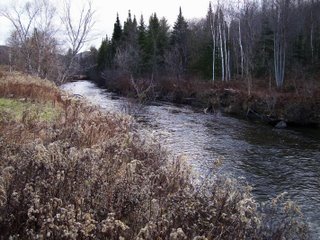
It's a beautiful morning here on the hill, 5.6 degrees with a mild wind that reminded me to tuck in my shirt when I took Karl the wonder dog for his morning walk. It was a short walk for him, his choice, but it gave me long enough to notice the stars turning off for the night as the sunlight grew stronger from the east.
Sun rises tell me it's time to get moving. A sunrise as beautiful as this morning's encourages a good attitude and a good day. Some folks even get fanatical about sunrises, traveling back to certain places, taking pictures and movies....that kind of thing. My favorite place other than Vermont is Cadillac Mountain at Acadia National Park in Maine. There's something special about sitting on that granite mountain and looking towards the harbor and the ocean and watching the sun. Here in Vermont, Cabot Plains is an easily accessible place with great sunrises and sunsets. Good or bad, you cannot question your sense of beauty when you can often hear shutters close on nearby cameras of all sizes.
Sunset isn't on my mind today, finishing our 2006 taxes by sunset is. I already have some other commitments at both ends of the day so I may not make my goal...... but I'll be close. It keeps reminding me that my last post Tax Time Beckons didn't explain sole proprietorships and limited liability companies. I should have mentioned them.
If you decide to put together a nursery business, or any other business, you need to register the business within your state. Choosing business names is a topic in itself. A name that is available for use within your state and on the Internet, and a name which any number of people don't already use in other states has to be considered. Many people have this thing about names and pick the name first, forgetting that it may already be taken. A business card with your name on it is nice, but a business card does not a business make.
In Vermont the Secretary of States Office is very well organized, consumer friendly, Internet oriented and just plain helpful. You can even find a real person to talk with by telephone. Their site has a database of registered names so you can begin to see if your name makes sense. As I say, this is a topic in itself but the process has to be respected.
For some reason people including a lot of paid business consultants think that small business translates to sole proprietorship. I don't agree. In today's age I feel that you have to protect your business as well as your other valuables and to that end a limited liability company is the way to go. Although attorneys may charge $300-$400-$500 to do this for you, in Vermont the process and form are readily available on the Internet on the Secretary of State site. I suspect this may hold true in other states too. Starting this year you can even file annual reports and make annual renewal payments on-line.
An LLC separates your personal and your business resources so if the business runs into financial difficulty, it is clear what goes with what. Something to think about for you but not really a choice as far as I am concerned. No one likes the thought of financial distress or being sued for a business related event. We seldom hear of problems in Vermont but it's more prevalent than you think and is important to be prepared for anything.
If you're interested in a nursery business, and live in the east, there's an event this week that you have to consider. New England Grows is a three day trade show held annually at the convention center in Boston. I shouldn't just say convention center, it's the one off 415 Summer Street. This is a fun show with over 600 exhibitors and daily presentations about relevant nursery topics. It's the single best place to find out who sells products you need for your business. It's also the place to meet people face to face, find out what's new and get other folk's opinions on challenges you will face.
If the entrance price seems steep, you may not have been to a show lately. Just pay the price as it will pay dividends over time. Also remember to keep your receipts and travel info as it's all tax deductible. Oh yes, don't forget a good pair of walking shoes and in the first hour pay attention to places to sit down. At some point you'll want a break and it might just be at the same time everyone else has the same idea. The show runs Tuesday through Thursday. Say hi if you pass me on the floor.
Writing from the mountain above Peacham Pond, where the sun is up and the temperature is down. That happens most days but is more noticeable in winter.
Good Gardening thoughts,
George Africa
http://vermontflowerfarm.com
http://thevermontgardener.blogspot.com




































